MEMBERS OF AMADEUS CRUISER CLUB
NO SINGLE MILE OF MONOTONY
Discover the Danube with the AMADEUS Queen

THE BEAUTY OF THE MOSEL
Big debut for the Rhine‘s ‚little sister‘
September 2019/Issue 05
MAGAZINE FOR
Dear AMADEUS guests,

Ask any experienced river cruisers what they like most about holidaying on water, and you’ll get a wide range of answers. For some it’s the hours relaxing on deck watching the landscape drift past like a slow and sumptuous movie. Others rave about the comfort on board while safely exploring so many exciting cities. And all agree that the brilliant atmosphere, excellent cuisine and perfect service offered by a luxury hotel on the water is second to none.
Read all about the above – and more – in our latest issue of AMADEUS magazine: Discover the Mosel, which is at its most beautiful and interesting between Koblenz and Cochem. Immerse yourself in the hustle and bustle of Cologne, a city providing fun and fascination in equal measure on both banks of the Rhine – and not just during Carnival!
We also take you to some of the ‘tastiest’ excursion destinations along the Danube: How about a helping of Hungary’s best marzipan, a jug of beer from the world’s oldest monastery brewery, or the Wachau Valley’s famous bread rolls featuring the baker’s initial as a mark of authenticity?
If this sounds like paradise, you’ll know how the travel writer who boarded the AMADEUS Queen felt. His conclusion after one nights and a day: “Dreams really do come true onboard an AMADEUS vessel!!”
We hope you enjoy reading the magazine, and that it helps you forge your travel plans for your dream holiday. Maybe we‘ll meet next spring aboard the new AMADEUS Imperial, which launches on Europe‘s waterways in April. Then you can tell us in person what it is about river cruising that you love.

With kind regards,
 Wolfgang Lüftner Martina Lüftner and the AMADEUS-Team (magazin@lueftner-cruises.com)
Wolfgang Lüftner Martina Lüftner and the AMADEUS-Team (magazin@lueftner-cruises.com)
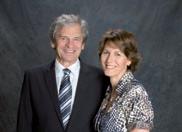
AMADEUS Provence 1
MAGAZINE
CONTENT
4 LATEST NEWS
• AMADEUS Diamond: A Jewel shines in new splendour

• FROM RIVER TO FAIRWAY: Golf Cruises on the Rhine, Seine und Danube

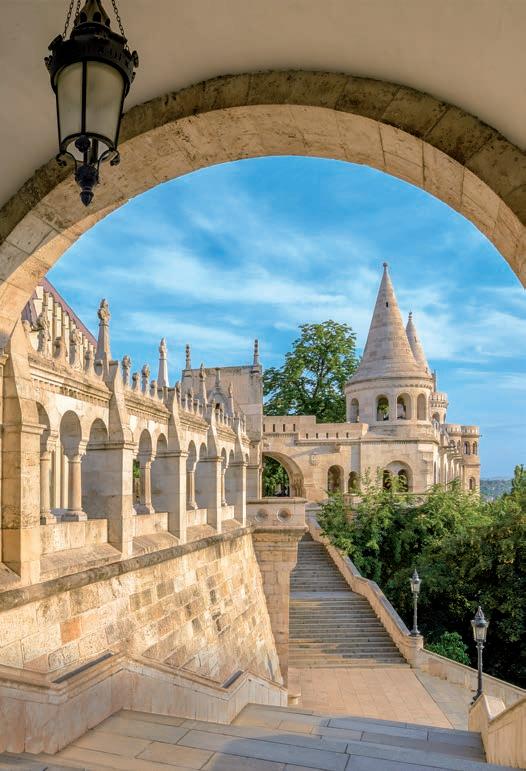






• MUSIC CRUISES 2020: with Beethoven on Danube and Rhine



• AMADEUS Imperial new from spring 2020
6 THE BEAUTY OF THE MOSEL

The little sister’s grand entrance
12 COLOGNE
A declaration of love
16 NO SINGLE MILE OF MONOTONY
Author and travel journalist Jörg Bertram travelled aboard the AMADEUS Queen
22 INTERVIEW with Robert Goree, Hotel-Manager, and Paul Vlade, Maître d‘hôtel

24 DR. WOLFGANG LÜFTNER RECOMMENDS
The Blue Danube: so much more than a waltz
26 A STAR IS BORN AMADEUS Star, the latest member of the AMADEUS fleet
28 AMADEUS CRUISER
2
CLUB Publisher: LÜFTNER CRUISES, Amraser See Str. 56, A-6020 Innsbruck, www.lueftner-cruises.com This Magazine is copyright protected. Lüftner Cruises accepts no liability for the accuracy of the information in this magazine Layout & Design: Claudia Messner Werbegrafik, Editorial: Vagabond-PR (www.vagabond-pr.com) Photo Credits/Copyrights: Atont France, Basel
Tourismus, Bildagentur Huber, Budapest Information, Bauer, Corbis, Dieter Jacob, Eichholzer, Ferienland Bernkastel-Kues, Fotostudio Stanger, Frankfurt Tourismus, Hotel Sacher Wien, Keukenhof, Koblenz-Touristik, KölnTourismus GmbH, Le Palais Prag, Lüftner, Lyon Tourist Office, Manfred Horvath, Niederösterreich Werbung, Oberösterreich Werbung, Peter Rigaud, Philippe Bastie, Rausch, Regensburg Tourismus, Rüdesheim Tourist AG, Rumänisches Touristenamt, Shutterstock, Tourismusverband Linz-Donau, Tristan Deschamps, Wien Tourismus, Zwickl
3
Fisherman’s Bastion in Budapest
News from the world of Amadeus
AMADEUS DIAMOND: A JEWEL SHINES IN NEW SPLENDOUR
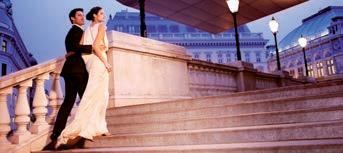
What has more sparkle, the AMADEUS Diamond or Paris by night? Not an easy question to answer, especially since this summer, when our exclusive Seine river cruiser returned from four months of refurbishment works looking more glamorous than ever!
The cabins, suites and public areas had a timelessly elegant update. We also invested in a state-of-the-art SMART TV system as well as high-speed Internet and Wi-Fi. The attractive route will remain unchanged, and eight-day journeys from Paris to Normandy and back will again be offered next summer.

FROM RIVER TO FAIRWAY: GOLF CRUISES ON THE RHINE, SEINE AND DANUBE
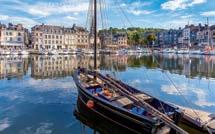


In 2020, we will again be offering our own golf cruises with experts, reserved tee-times and transfers included. We start on 12 to 19 May with the AMADEUS Imperial on the Rhine. Between Basel and Amsterdam, we tempt you with golf courses in Alsace, near Heidelberg (St. Leon-Rot) or with a view of the Boppard Rhine Gorge. Staying with the AMADEUS Imperial, we explore the Danube from the 8 to 15 October. If you are game, why not venture to Europe’s longest par-6 hole (716m) at the Penati Golf Resort in Slovakia? From 10 to 17 June, golfers really come into their own aboard the AMADEUS Diamond: From Paris to Le Havre and back again, they enjoy courses including Étretat, Vaudreuil, Le Golf National and Saint Saens.

MUSIC CRUISES 2020: WITH BEETHOVEN ON DANUBE AND RHINE
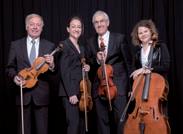
Born in Bonn and died in Vienna, Ludwig van Beethoven always felt a close connection to the two great European rivers. On the occasion of his 250th birthday in 2020, we celebrate the famous composer with two music cruises:
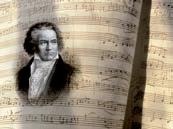
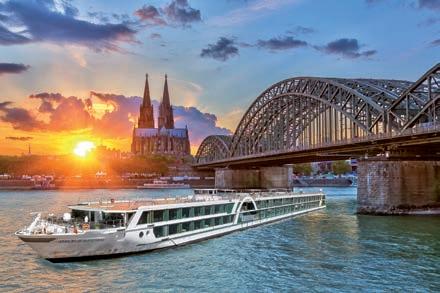
The AMADEUS Silver III will travel from Amsterdam to Basel. Highlights include numerous private concerts by renowned interpreters and ensembles, both onboard and on land. The AMADEUS Imperial will be voyaging along the Danube with top-class artists and music expert Humphrey Burton.

AMADEUS IMPERIAL: NEW FROM SPRING 2020
12 luxurious suites, 72 comfortable cabins, and a proud 135m in length: In the spring of 2020, the AMADEUS Imperial will expand the AMADEUS fleet. It is a ship of superlatives – and your new home on Europe’s most beautiful waterways!
Currently under construction at the Dutch De Hoop shipyard, the Imperial’s first voyage will pass through the canals of Holland and Belgium in early April. The elegant premium liner will spend most of the season between Amsterdam and Basel.
Although trips to the Black Sea and the world-famous Danube Delta are also programmed.
5 4
TheofBeauty the Mosel
Of wine, castles and history... Impressive fortresses, picturesque towns and precipitous terraced vineyards that seem to rise straight from the water into the clouds:
the stretch of the Mosel between Koblenz and Cochem is utterly stunning – a meandering, tranquil river whose earthly delights have been enjoyed by visitors since the ancient Romans.

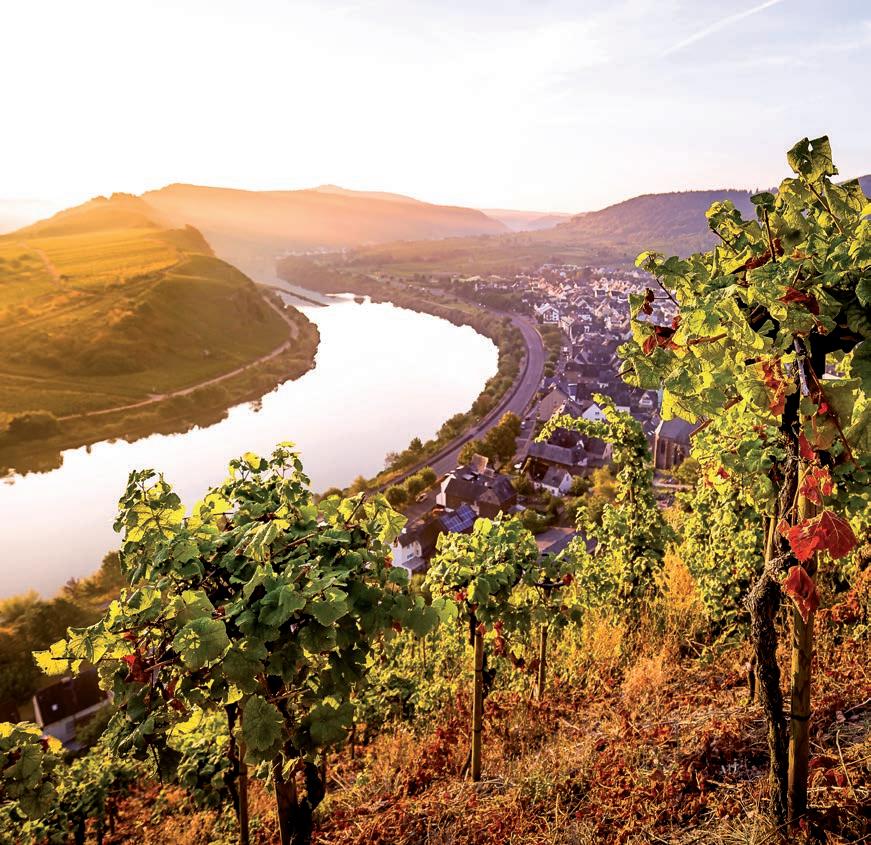 left: Wine growing along the Mosel above: Cochem’s landmark, the Reichsburg imperial castle
left: Wine growing along the Mosel above: Cochem’s landmark, the Reichsburg imperial castle
7 6
THE LITTLE SISTER’S GRAND ENTRANCE
Granted, The Mosel is the Rhine’s longest tributary but, with a navigable length of just 394 km / 217 miles, it is also considered its ‘little sister’ – who nevertheless holds her own when it comes to drama! In Koblenz, where the giant equestrian statue of Emperor Wilhelm I watches over the confluence of the two rivers at Deutsches Eck, its mostly pale green waters mingle with the dark blue Rhine, setting the tone far beyond the city to the island of Niederwerth. This unique sight is best enjoyed from the Ehrenbreitstein Fortress high above Koblenz, an easy ride by cable car. Built in 2011 for the BUGA garden show, the aerial lift has been causing a great deal of commotion
ever since. While most locals – as well as visitors from around the world – are delighted to float up and down the steep slope in the gondolas, and rave about the elegance of the airy structure, the strict UNESCO jury considers the columns and ropes a blight and is threatening to withdraw the Upper Middle Rhine Valley’s World Heritage Site status. Who is right? We recommend you go see for yourself – and, if possible, from gondola number 17, which features a glass bottom andguarantees a truly heavenly experience!
Koblenz, the ‘eastern gateway to the Mosel’, has lots to offer: With almost 115,000 inhabitants, today’s city, founded by the Romans as the Castellum apud confluentes, i.e. the fort at the confluence, boasts a laid-back vibe with friendly beer gardens and traditional wine bars on the banks of both rivers. The short walk from the cruise ship moorings to the alleys in the historic centre takes you on a journey through centuries: past Romanesque churches, baroque pediments and grand neoclassical buildings.

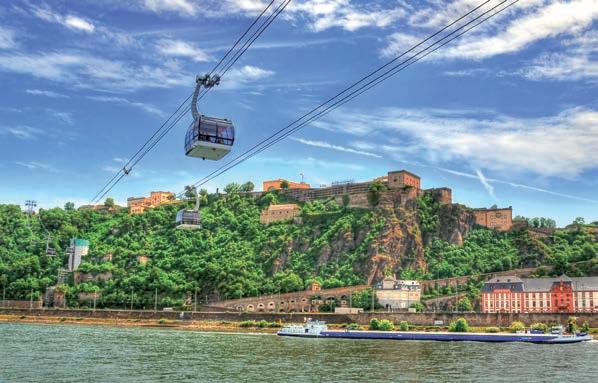
BEETHOVEN, BRENTANO, BAEDEKER – AND A VERY NAUGHTY BOY

The city’s illustrious denizens include romantic poet Clemens Brentano, Beethoven‘s mother Maria Magdalena Keravich, and Karl Baedeker, the originator of the modern travel guide. These three eminent Bs cannot, however, match the popularity of the Kovelenzer Schängel, a bronze figure of a boy set on a fountain. Famous for spitting at visitors from its tall pedestal in the town hall’s courtyard, it dates back to the period between 1794 and 1814 when Koblenz was part of the French Republic: the name Jean supplanted plain old Hannes or Johann but, since the name’s French pronunciation was somewhat tricky for most German-speaking locals, Jean quickly turned to Schang and finally Schängelche. Nowadays, all children born in the city are referred to as Schängelche, regardless of gender. According to a popular carnival song, the only condition for a baby citizen of Koblenz to be awarded this moniker is to have been christened with water from the Rhine or Mosel, or with wine.
STOP & FLOW ON THE MOSEL
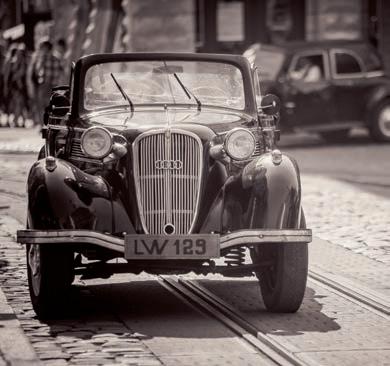
Gondola Number 17 with Glass Bottom
*Insider Tip
A little way upstream from Koblenz and the impressive Baldwin Bridge, believed to be the first Mosel crossing made of stone, a marvel awaits you: at the Mosel river lock, our vessel will need to overcome a height difference of almost 5 m / 16.5 ft plus a huge set of steel gates. Between its source in the French Vosges mountains and where it joins the Rhine, the Mosel has to pass 28 of these technical masterpieces. They transport excursion boats, private yachts, river cruise ships, and up to 180 m / 590 ft long towed convoys up and down the lock – and all with the help of the river’s own hydroelectric power, which also supplies around 300,000 households with electricity!
GLOBAL COMPANY WITH LOCAL ROOTS
How many electric cars could all that power fuel? The young August Horch might well have been able to answer that. Born in 1868 in the winegrowing village of Winningen, and the son of a winemaker, he was nevertheless more interested in wheels than wine. By the age of 13, he had constructed a penny-farthing in his parents‘ shed. Just 20 years later, he’d built his first car and set up a company in Cologne. Horch & Cie, as it was known at the time, is now the famous Audi brand (based on the Latin translation of Horch, the German word for ‘listen’). A small museum in Winningen’s school pays tribute to August Horch and is well worth a visit. Every year, a wine is even awarded the August-Horch-Edition title. Speaking of wine, only wine from the vineyards inside the municipality may call themselves Winninger Weinhex. Today, around 30 families work full-time in wine growing and cultivation, and it’s becoming increasingly popular –not just in Winningen but all along the Mosel. This is mostly thanks to a new generation of young winegrowers who put quality above quantity – they have made, for instance, the world-famous (and somewhat sugary) Kröver Nacktarsch look decidedly old-fashioned.
8 above: The cable car takes you to the Ehrenbreitstein Fortress in Koblenz below: At Deutsches Eck, the Mosel flows into the Rhine
10-11 above: Cochem’s old town right: View from the vineyards
9 8
9 above: Hoch & Cie: Audi’s forerunner below: Bronze fountain figure of the Schängel in Koblenz
A LONG HISTORY OF WINE GROWING
It is impossible to say exactly who first brought wine to the Mosel. The grapevines in this region are individually staked to the ground, indicating the Celts as possible contenders. The region’s numerous wine presses, however, point to the Romans. Whatever the true history, what is undisputed are the increasing numbers of wine connoisseurs from all over the world recently developing a thirst for the region’s typical Rieslings and Müller-Thurgau. The cultivation of fine reds is also on the rise thanks, in no small measure, to the summertime temperatures on the slate terraces along the river easily rising to 40°C / 104°F and above. The only bad news for the successful winemakers are the steep slopes, some of which having up to 60% inclines. This means all cultivation and harvesting has to be by hand. Stand on the right-hand side of the deck as we proceed upriver, and see how little has changed in this back-breaking job since the Romans (or was it the Celts?).
EXTRAORDINARY EDIFICES
On the river’s left bank, and famous for its wineries and picturesque half-timbered houses, Cochem is also known as the Neuschwanstein of the Lower Mosel. This is in no small part thanks to Jacob Louis Ravené, a migrant from faraway Berlin. On a business trip to the Mosel region, the gallerist and hopeless romantic fell in love with the ruins of the Reichsburg imperial castle towering high above the town. He went on to rebuild it in just under ten years. Today the castle with its towers and Gothic Revival spires is one of the town’s main attractions, open to visitors between April and November. Top-class cultural events, folklore festivals and medieval banquets also take place behind its venerable walls. If you prefer the romance of the railway to fairy-tale castles, the ornate entrance to the Kaiser Wilhelm Tunnel is a must. Located in the centre of the town, it leads into what is still one of the longest railway tunnels in Germany. 4.2 km / 2.6 miles long, it connects
Cochem with the idyllic Ellerbach Valley, the starting point of countless footpaths through the forested Eifel mountain range. The old Bundesbank bunker in the Cochem Forest, where the German Central Bank kept the state’s billions safe during the Cold War, is also worth a visit. The Bunker Shuttle takes visitors from the town centre to this impressive facility, where you can take a guided tour. In addition to the castle, railway tunnel and bank bunker, a stop in one of the area’s countless wine taverns is unmissable. Enjoy the wonderful atmosphere of their rustic cellars and backyards and tuck into the Mosel’s specialities such as cheesy Grupfter Käs or Tresterfleisch, a delightful dish of pork cooked in wine. A glass of “the most delicious Mosel wine”, as noted by Goethe, offers the perfect accompaniment. Less poetic but with equal relish, Kurt Tucholsky described his long Mosel journey in his notes: “We slowly soused our way downriver.” Even in antiquity, the fourth century Roman poet Decimus Magnus Ausonius lauded the “stream whose banks are overgrown with Bachus’s fragrant vines” in his Mosella. Good to know that some things never change. Let’s raise a glass of good Mosel wine to that!
MOSEL WINES
The steep slopes around the Mosel river valleys offer excellent conditions for quality wine growing. The grapes that are cultivated on slate soils mostly produce fruity wines with a pronounced minerality and moderate alcohol content, which makes for a perfect fit with modern, light cuisine.

About 91 percent of the vineyards are used for the cultivation of white wines, and, as in the Rhine Valley, Riesling represents the most important grape variety. Its very long grape maturation phase produces fine fruity wines with an elegant aroma, ranging from off-dry to dry and mineral.

Other tried and tested varieties that flourish here include the semi-dry to dry Müller-Thurgau and smooth Pinot blanc. Elbling is a true Mosel specialty, a sparklingly fresh wine with a special feature: Both red and white grapes can grow on its vine. The red Elbling grapes are often harvested separately and processed into rosé wine, but, according to wine law, red Elbling is still a white wine.
Red varieties are rarer among the Mosel wines, but they are of particularly exquisite quality. These include Pinot noir with its fruity and elegant complexity, and the vigorous, tannin-rich Dornfelder, whose intense reddish black colour is characteristic of this variety.
“Stream whose banks are overgrown with Bacchus’s fragrant vines”
Decimus Magnus Ausonius
11 10
Cologne, a declaration of love

„Cologne may not be perfect, but it is faultless“, the great German author Heinrich Böll once said. Was he right about his hometown? Let’s find out! Flanking both sides of the Rhine, the modern cosmopolitan city attracts visitors with splendid churches, modern art and a very special attitude to life that sets the tone throughout the year, and, of course, during the Carnival.
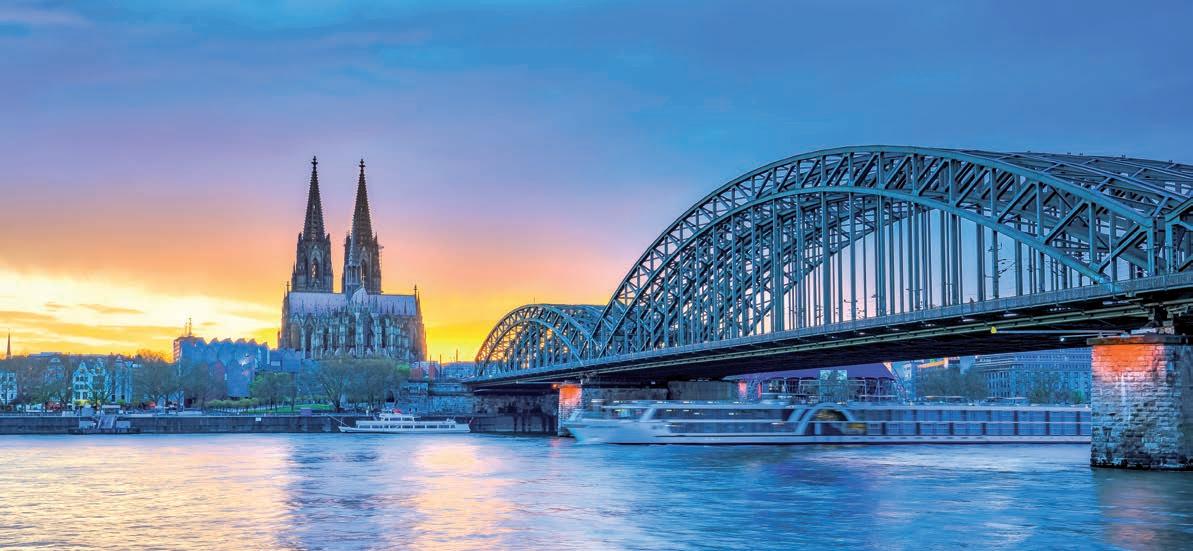
12-13 Cologne Cathedral, the city’s famous landmark
Carnival high jinks 14 The Gothic cathedral’s vaulted ceiling 15 Colourful and lively: the fish market near Gross St. Martin below: The Rheinpark
below:
13 12
Not to be missed: the cathedral
WHERE TO START?
Even the well-travelled and worldly-wise can sometimes have difficulty finding their way around a new city. But not in Cologne, a city with a population in excess of a million.
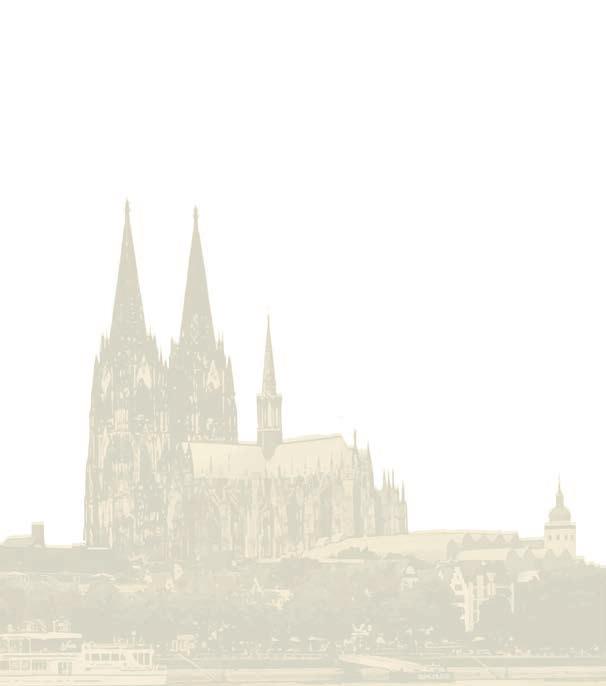
First of all, there is no missing the cathedral, especially when approaching from the river:

At first, only the filigree spires of the two almost 160m / 525ft-high towers are visible from deck. Then the columns and stanchions of the High Gothic masterpiece begin to edge into view. Finally, the cathedral is revealed in almost its full size and splendour, only partly obscured by the three mighty trussed arches of the Hohenzollern Bridge, an impressive structure starting at the central railway station, and linking the city centre with the ‘wrong side’ of the river (but more on that later). From the laying of its foundation stone to its inauguration in 1880, the cathedral took 632 years and two months to build. The only building project that took even longer was the Great Wall of China. But that is (and always has been) the spirit of Cologne: distinctly devout, but in a slow-paced kind of way...
GODLY AND UNHURRIED

Next to the cathedral, a pilgrimage destination for up to 30,000 visitors a day, you will find two of Germany’s most important museums:

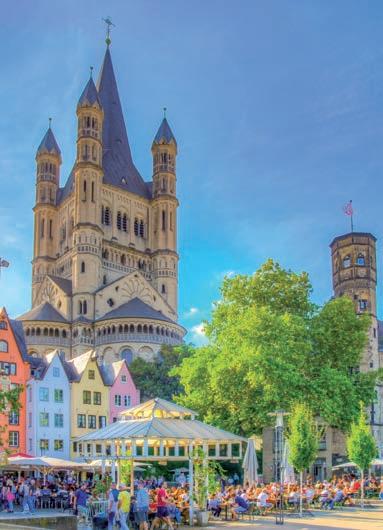
The Museum Ludwig with its comprehensive pop art collection is considered a mecca for modern art, while the Roman-Germanic Museum has made a name for itself as a temple to antiquity. Extraordinary and definitely worth the visit is the 75 m2 / 807 ft 2 Dionysus mosaic, which dates from the 3rd century AD. Upriver, the path leads across the pedestrian zone around the cathedral and almost straight into the old town – or what is
left of it. Although only a few buildings survived the Second World War bombing raids around Alter Markt Square and the Romanesque church of Gross St. Martin, the charm of the district, with its cobbled streets and tall facades, has nevertheless endured. The area features many quaint inns and traditional brewery pubs like the Sünner im Walfisch, which are popular with both locals and visitors. Tip: Ask your waiter for a Kölsch beer with a Halve Hahn (half rooster) and try not to look surprised when your beer is served in a slim 0.2ltr glass alongside a rye bread roll topped with Gouda cheese and onions rather than the expected half a roast chicken.
CHARMING CHOCOLATE
A must for the sweet-toothed: Just a ten-minute walk from the old town, the Chocolate Museum on the Rheinauhafen peninsula features a 3 m / 10ft-high chocolate fountain.
The peninsula is also worth the trip for the three Kranhäuser: 17-story riverside buildings located south of the museum. The bold, reinforced concrete giants in whose shadow small cafés, restaurants and art institutions have settled have long since become landmarks of contemporary architecture. Each building is shaped as an upside-down ‘L’, paying homage to the cranes that used to load and unload ships before the harbour was repurposed as a residential and commercial district.
SCHÄL IS CHIC!
Ready for a trip to the Schäl Sick? That’s what locals call the districts on the ‘wrong’ side of the Rhine. It is only a few minutes to the cable car, which takes you to the right bank of the Rhine in small, brightly coloured cabins. When you get there, you’re in for a surprise in the form of the Rheinpark. In the immediate vicinity of the water, this 400,000 m2 / ten acre urban park offers thermal baths, the legendary Tanzbrunnen events venue, and the trendy Rheinterrassen where sandy beaches await. So, what’s so ‘wrong’ about this side?
ROOFTOP VINTAGE
The city’s Belgian Quarter, whose streets and squares are named after the neighbouring country’s cities and provinces, is perfect for a stroll.
Between Aachener Straße and Mediapark, carefully renovated 19th-century buildings line up – each a pearl in its own right. Many of them house first-class galleries which have made Cologne’s name as Germany‘s leading art city. The Belgian Quarter is also an urban oasis: The Aachener Weiher lake and nearby Museum of East Asian Art are well worth a detour. For the horticulturally minded, heaven is located adjacent to Cologne Zoo at the Flora and Botanical Gardens with a beautiful Belle Époque hothouse. The gardens are particularly attractive in spring when the camellias are in bloom. On the edge of this huge park, the Wittling family have established their wine emporium.
Don’t miss taking a peek at the roof where around 40 varieties of grape are grown in the Rhine’s northernmost vineyard. Drop into their shop downstairs for a taste of fine Monte Vino Colonia wines as well as many other first-class wines from around the world. And, if you have time, check out the attached wine museum where you will discover that Cologne was the most important wine trading centre north of the Alps until well into the Middle Ages, and even boasted its own vineyards within the city walls.
Nothing at all! On the contrary, the Deutz district on the right bank of the Rhine is now considered hip and has highly sought-after properties. So, where did this strange name for the ‘other’ riverbank come from? Back when the ships were still pulled upriver by horses, the animals’ eyes were protected against the glare of the water by blinkers which barely allowed them to squint across to the right bank... Although the horses have long since disappeared from the towpaths, the name has stuck.
Although the people of Cologne are known for being laid-back, if you would like to see their wild side, come back on the 11th of the 11th at 11:11 am when Cologne’s world-famous Carnival kicks off at Alter Markt in the old town. From then until Ash Wednesday, dancing, kissing, singing and celebrating are the city’s priorities. The absolute highlight is Rose Monday,
when hundreds of thousands of people in fancy dress line the streets of the city to watch the up to five miles long procession of floats, bands, people on foot and on horseback. If the ‘fifth’ season on the Rhine gets a bit too boozy, you can always blame the Nubbel, a straw doll that hangs over most of Cologne‘s pub entrances during the Carnival. On the night of Ash Wednesday it is publicly burned – and all the sins and transgressions committed by the revellers during the Carnival are burnt with him. It’s that easy!
15 14
Not a single mile of monotony
For one night and one day, author and travel journalist Jörg Bertram travelled aboard the AMADEUS Queen. What did he experience?

“More than most would during a full week’s holiday!” According to the well-travelled cruise expert this was because:
“This AMADEUS vessel has everything – but not a single mile of monotony!”
 JÖRG BERTRAM, travel journalist
JÖRG BERTRAM, travel journalist
17 16
Good Morning Budapest!
6 am – BUDAPEST
Wake up to the view of the famous Gellert Spa outside the large cabin window, and oven-warm croissants in the Panorama Bar – is there a better way to start the day? After yesterday’s folklore show and the subsequent views of Budapest after dark, I decided to set an alarm for this morning. My aim is to run along the splendour we admired from onboard ship last night. So, out of bed, into trainers, a dash to the early-risers’ buffet and across the gangplank! If I hurry, I’ll make it to the morning gymnastics on the sundeck and then into the restaurant – I’ve heard the scrambled eggs with smoked salmon is fantastic…
8.30 am – PUSZTA, HERE WE COME!
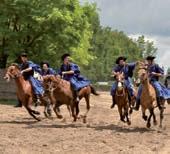
Workout over and well-fed, we board the bus and head for the Puszta. The steppe is not the barren landscape I imagined, and the journey takes less than an hour. Just enough time to listen to all the guide’s exciting stories through the brilliant Quietvox® in-ear device. One last turn to the left, and we’ve reached the magnificent Lázár equestrian park in Domonyvölgy. Pronounce it properly, and you’ll get a second welcome schnapps, before being taken across the huge site in a horse-drawn carriage. The equestrian park was founded by brothers Zoltan and Vilmos Lázár, multiple carriage driving world champions and owners of
Hungary’s largest chain of supermarkets. We have a quick tour of the stables, the farm, and a museum where their trophies are on show. Then the real highlight: an astounding horse show featuring precious black horses, cheeky ponies, historic carriages, whip-cracking guys shooting arrows at a gallop and an adroit princess demonstrating her dressage skills. Didn’t the famous Empress Elisabeth of Austria, fondly known as Sisi, spend many a summer nearby? “True,” says our guide on the drive back, “Gödöllö was her favourite palace.”
I can see why...
Everything in the flow!
1 pm – PAPRIKA PEPPERS
GALORE!
Until the AMADEUS Queen’s departure we have just enough time after our fantastic lunch to pay a visit to the Great Market Hall, which is right opposite the pier. Built in the neo-Gothic style with long colonnades and a tall ‘nave’, it reminds me a bit of a church. Or rather, of a ‘cathedral of good taste’, because the display of fresh fruit, pickled vegetables, airdried salamis, fine goose liver pâté and brightly coloured sweets is simply overwhelming! At one stall, I bump into our ship’s chef George Pereira, who is stacking tons of bright red paprika peppers in his big shopping basket: “For tonight’s goulash soup, which is at least as good as a Hungarian one!” Really? We’ll find out soon enough.
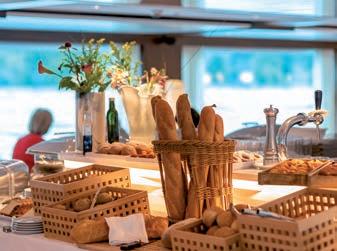
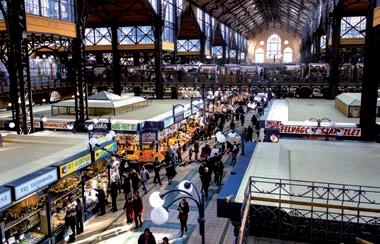
3 pm
Budapest, its palaces and parks have long since disappeared behind us, and we are now in the Danube Bend, where,
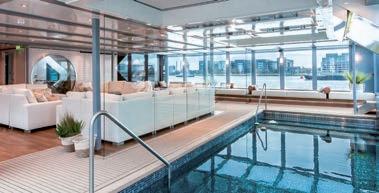
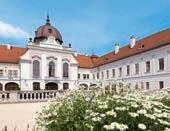

from my deckchair, I watch castles, forests and villages drift by like a movie. Reading and dozing are now called for. And if Hungary’s summer sun feels a trifle merciless as I idle on deck, a dip in the indoor pool in the luxurious conservatory ambience of the AMADEUS Club at the stern of the ship provides welcome respite.
“Do I turn left or right here? Can I overtake that tractor before the bend? And am I even going in the right direction?!” It’s good not to be travelling by car. Life on board is so much easier, and there are just two questions that need answering: Shall I go for the strudel or the Esterházy torta at the afternoon pastry and cake buffet in the Panorama Bar? Maybe both?
Breakfast Buffet Indoor-Pool
16 -17 The Basilica in Esztergom
18 Budapest at night
19 18
19 left: Horse show in the Lázár equestrian park centre: Gödöllö Palace right: ‘Cathedral of good taste’ – the Great Market Hall in Budapest
11 pm – A SPICY GOODNIGHT

Served in the Panorama Bar, the chef’s goulash soup turns out to be a fiery treat and the perfect bedtime snack. A delicious end to a fabulous day!
6.30 pm – THE BLUE HOUR ON THE BLUE DANUBE!

Those fellow passengers who had booked the overland excursion from Budapest arrive back on board – just in time for cocktail hour in Esztergom! As they gush about churches, artist colonies and castles, we counter with coffee, cake, and the cinematic display the river offered us. We all look extremely happy though...
7,30 pm – GOURMET
ONBOARD CUISINE AND BARBECUES ON LAND




After a quick private tour of the galley with the maître d’hotel and chef shortly before dinner, I’m even more appreciative of the exquisite menu. It’s unbelievable what the keen, and perfectly coordinated, kitchen and service brigade is able to conjure up each and every evening! Every movement is perfect, every decoration pleasing, and every bite results in a true taste explosion on the palate! My absolute favourite tonight: the roast duck with Asian vegetables and local dumplings. As they melt on my tongue and I chat about the day’s events with my tablemates, we can see a wilder, untamed Danube outside the restaurant windows: We are passing the Hungarian-Slovak Danube floodplains, which are criss-crossed by secret side arms, elongated sandbanks and romantic pebble beaches. Now, in summer, many locals come here with their tents, kayaks and small motorboats. Burning campfires and smoking barbecues indicate their presence. We toast their adventurous spirit with a glass of red wine and wish them “jo étvágyat”: Bon appetit!
While musicians Kati & Dodi keep the dancefloor rocking and ice cubes clink at the bar, I’m drawn to the comfort of my marvellous bed. As we glide over the waves, I sleep as if on clouds –dreams really do come true onboard ship.
above: Fisherman’s Bastion in Budapest
On bord
dreams come true.
Cocktail-Time at the Panorama-Bar
Panorama-Restaurant AMADEUS Suite Panorama-Restaurant 21 20
Panorama-Bar and -Lounge
River Whispering
53 CREW MEMBERS FROM 11 NATIONS LOOK AFTER THE PASSENGERS’ WELL-BEING ON THE NEW AMADEUS QUEEN, AND TWO WHO ALWAYS SEEM TO BE IN THE RIGHT PLACE AT THE RIGHT TIME ARE DUTCH HOTEL MANAGER ROBERT GOREE AND ROMANIAN MAÎTRE D’HOTEL PAUL VLADE. WE TALKED TO THEM ABOUT THE SHIP, THEIR FAVOURITE ONSHORE DESTINATIONS AND ALSO LEARNED ABOUT DAY-TO-DAY LIFE ON BOARD.

Robert, Paul, what attracted you to working on river cruisers?
Robert Gorree: After many years as a hotel manager in Berlin, South Tyrol, Croatia, Kenya and Spain, I felt it was time for a change. I found there was simply no time to interact with guests while managing large, land-based hotels. Most of my days were spent stuck in my office and I desperately craved a more personal job. Things are very different on the ship as you‘re there for your guests all the time –from the moment they check in to the moment they check out – and there’s always something new going on. I also spend a lot more time with colleagues because we’re constantly together –and in a relatively small space. Sometimes it feels like I’m the father of the crew (laughs)!
Paul Vlade: Things were slightly different for me. I was a waiter, and not particularly happy in my job. A friend said I should try working on a river cruise ship. That was back in 2013, and I‘ve been on the move with the AMADEUS fleet ever since. To be honest, I can’t imagine working in one place anymore.
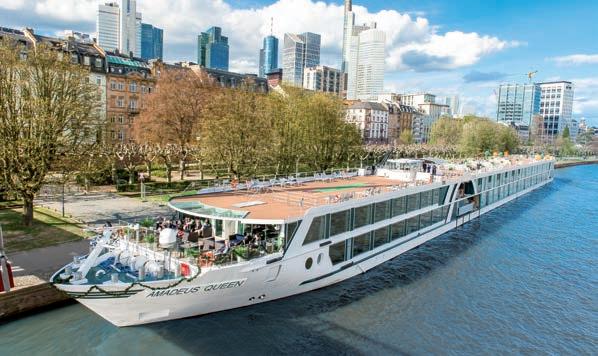
What are the key challenges on board ship?
R.G.: You have to be really flexible and able to improvise. It’s not unusual for the route to change as a result of sudden rises or drops in the water level. When that happens we have to organise new buses for excursions, get packed lunches for the guests, and adapt the whole day’s programme.
P.V.: We too need a talent for improvisation. We had an Israeli guest on a trip in Holland, for example, who required his usual matzo for breakfast. The problem was that we were in the middle of the country, a long way from Amsterdam where sourcing it would have been easy. So, I googled and made a few telephone calls until I finally found a supplier 18km away. I cycled there and picked up the bread – which was fun! I was even more delighted with the lovely thank you I received the following morning!
R.G.: That’s like the time I had to use one of the on-board bikes to get a bunch of flowers for a guest’s cabin.
P.V.: Well, maybe in the future we should hop on our bikes together and
enjoy our spontaneous shopping trips as a team (laughs).
Your guests come from all over the world. Are there any mindset differences you need to take account of?
P.V.: I tend to notice distinctive culinary preferences, but we’re always prepared for that. And if we’re short of an ingredient or two, we can always shop for it next time we go on land.
R.G.: From my point of view, we’re one big international family on board. And it works really well, although you do have to bear in mind the occasional idiosyncrasy and respond accordingly. For example, when we have lots of Australians on board, we know to keep the bar open for a few additional hours. The Australians do love to party!
Do you have any favourite routes that you particularly look forward to?
R.G.: I really enjoy the tours in the South of France on the Rhône and the Saône. The Mediterranean light, excellent wines, delicious food and many wonderful villages and cities like Lyon, Arles and Avignon: that’s savoir-vivre in a nutshell!
P.V.: I love the Danube – whether it‘s from Passau to Budapest or to the Danube Delta in my Romanian homeland. You get to travel through so many countries, hear different
languages, see the most incredible landscapes and learn so much about European history – I love it!
And what are your favourite places along the rivers?
P.V.: I really like Cochem on the Mosel.
R.G.: Really?! My favourite place is Bernkastel-Kues, just a bit further upriver. What do you like about Cochem?
P.V.: They have a great outdoor pool by the river; it’s the perfect place to spend a few hours on land in the summer. And what do you like about Bernkastel-Kues?
R.G.: There’s this wine tavern, hidden away, high up in the vineyards. It can only be reached on foot, and after a fairly long climb. But the hard work is worth it: You’re rewarded by a great view as well as good wine and local cuisine.
P.V.: Sounds like a real insider tip. Maybe you could take me there some time?
Interview with ROBERT GOREE, Hotel Manager, and PAUL VLADE, Maître D’hôtel
Robert Goree and Paul Vlade
23 22
The Blue Danube:
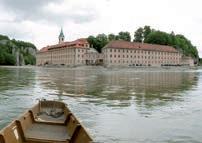

so much more than a waltz
Cosmas Damian Asam’s self-portrait high up in the ceiling fresco. As bold as it is creative, the painter has immortalised himself surrounded by the heavenly hosts. Afterwards, I suggest crossing the Danube on one of the flat-bottomed Zille boats or discovering the Weltenburg Narrows aboard a pleasure boat. In my view, a glass of Barock Dunkel before you leave is unnegotiable. This bottom-fermented, off-dry and slightly sweet beer is brewed with select Holledauer hops and fresh spring water according to an ancient recipe. Then it’s stored for up to six weeks in the 50m-deep rock-cut cellar before flowing straight from there to the tap. That’s how tradition should taste!”
SCHLOEGEN OXBOW
On its long journey to the Black Sea, Europe‘s second-longest river offers countless scenic and cultural highlights, especially in the first third of its course.
Or, in the words of Dr Wolfgang Lüftner: “For me, the upper Danube is both a waterway and a treasure chamber. The sights along both shores between Germany and Hungary line up like pearls on a sparkling necklace. Few river sections boast this much history and protected nature!”
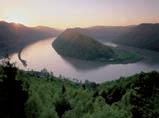
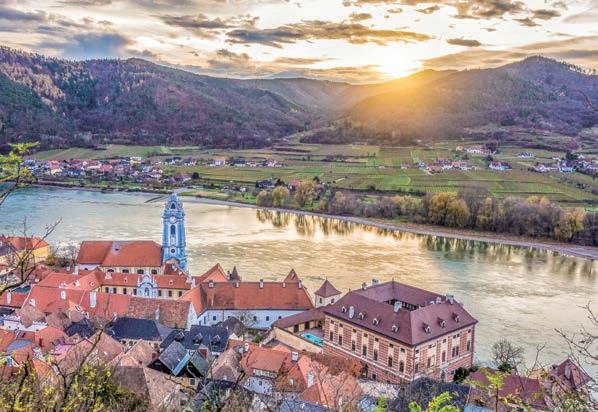
No wonder, therefore, that our company’s founder and managing director struggled to restrict his choice of favourite places to just four.
WELTENBURG ABBEY
“Weltenburg Abbey is located at the entrance to the Danube Gorge. To me it’s heaven on earth – and a truly historic place. Founded in around 600 AD by itinerant monks, this magnificent waterfront monastery houses the world’s oldest monastic brewery. But before visiting the idyllic beer garden for a sip of their noble brew, a visit to the abbey is a must. The monastery church, seemingly unassuming when seen from the outside, is a masterpiece of Bavarian high baroque. With a little luck, you may even hear the world famous Brandenstein organ being played during your visit. And, if your eyesight’s good, you should also be able to spot
“Halfway between Passau and Linz, between river kilometres 2180.5 and 2186.5, the Danube suddenly makes a few loops and even changes its flow direction from southeast to northwest. Known by experts as ‘Europe’s largest forced meander’, you get a great view of this phenomenon from aboard our ships. Guests should listen out for the Cruise Director’s announcements, so they can make their way to the upper deck with binoculars and cameras in good time to catch sight of it. It is always fascinating to watch the Danube meandering through the wooded hills in two 180-degree bends. I’m equally impressed by our captain and crew’s amazing abilities! It may look easy, but it’s precision work and takes years of experience as well as honed skills.”
WACHAU

“Wonderful and world renowned – and not just for its excellent wines! Despite having visited the region countless times aboard our ships, I still look forward to going. The voyage begins in Melk, whose eponymous abbey is now a UNESCO World Heritage Site. Located on a plateau above the Danube, its towers are visible from afar, forming the entrance to the Wachau. Among the special features of the baroque Benedictine abbey are
DANUBE BEND
the huge Prelate’s Courtyard and the Imperial Corridor, where portraits of all of Austria’s rulers, from the Babenberg and Habsburg families, hang along its almost 200m-length. The magnificent Marble Hall, where the clergy and the imperial family used to dine together, is also well worth a visit. And then there’s the library with its precious ceiling paintings by Paul Troger and the approximately 100,000 tomes whose spines gleam in a uniform matte gold. From the monastery in Melk we continue downstream to Dürnstein with its sky-blue and white church tower, one of the Wachau’s famous landmarks. I
“Look at the map and you can see that the Danube Bend almost forms a right angle at Vác where it turns right to make its way through the Visegrád Mountains. This is one of the most beautiful areas in Hungary and is considered a popular recreational destination for the people of Budapest. But many Slovaks and Austrians are also attracted to the Duna-Ipoly National Park as a holiday destination. It’s not just the landscape that makes the Danube Bend so attractive: St. Adalbert‘s Basilica thrones over Esztergom, a small town by the river with just 30,000 inhabitants. The church is one of the largest in the world. Its incredible dimensions – the interior alone measures approximately
in the 12th century. It has to be said, however, that he was held prisoner for three cold winter months and may have subsisted on stale bread and water. The crusty bread rolls known as Wachauer Laberl that are sold at the Schmidl bakery down in the village – and which are only really authentic, if they feature the letter ‘S’ on the bottom – were not available back then. Neither was the excellent wine that is grown all around the village. We always make sure our excursion plans include a wine tasting to familiarise you with the region’s typical Grüner Veltliner, but also Riesling, Neuburger, Muscat and other excellent wines of the region.”
5,600m2 and is more than 70m high – and its importance result from the times in which Esztergom acted as the Hungarian capital. The heyday of Visegrád Castle dates back even further, when it served as King Karl I of Hungary’s residence and later housed the legendary Crown of Saint Stephen. Today, everyone can enjoy feeling like an emperor on the site of the huge ruin as they appreciate the heavenly view of the river and surrounding mountains. A few kilometres from Budapest is one of my absolute favourite destinations

Szentendre is a magical baroque town, and home to seven churches as well as a vibrant artists’ colony since the 1920s: hence the many cafes, restaurants, shops, pretty galleries and workshops. If taking a picture or sculpture back on board doesn’t take your fancy, I recommend another, albeit much more perishable, speciality: The marzipan that is produced and sold in Szentendre is said to be the best in Hungary. And as a passionate gourmet, I can only agree.”
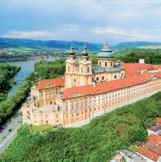 Melk
DR. WOLFGANG LÜFTNER RECOMMENDS:
Dürnstein
Weltenburg
Schloegen Oxbow
Melk
DR. WOLFGANG LÜFTNER RECOMMENDS:
Dürnstein
Weltenburg
Schloegen Oxbow
25 24
Dürnstein
We welcomed the 15th passenger ship of the AMADEUS fleet, the AMADEUS Star, during an exclusive Christening ceremony in April 2019.
The distinctive highlight on board is the AMADEUS Club at the stern of the ship: Passengers can enjoy a successful combination of a stylish and relaxed club and the breath-taking wine bar with a lowerable side front, which has been specially conceived for this ship.
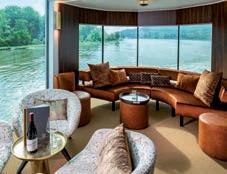
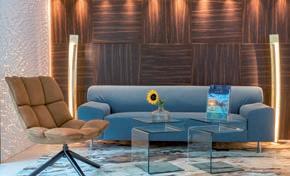
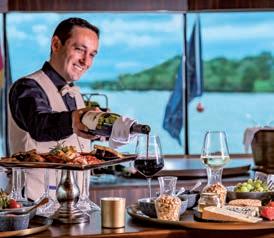
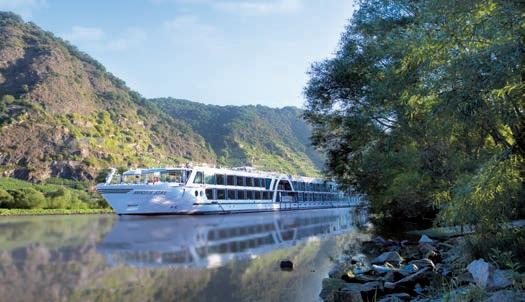

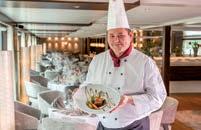
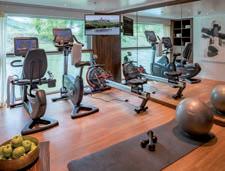

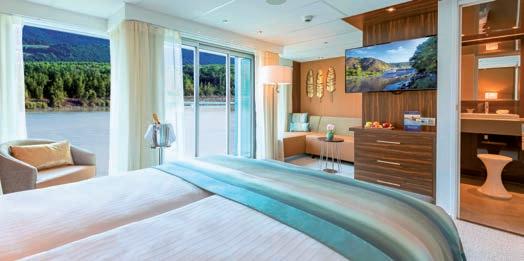
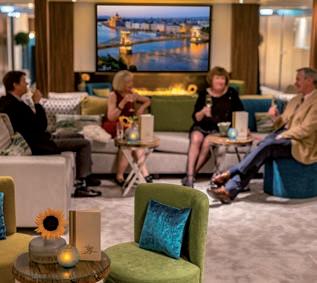 AMADEUS Suite and staterooms with drop-down panoramic windows
Panorama-Restaurant, AMADEUS Club, outdoor glass-shielded “River Terrace” on the bow as well as fitness room
AMADEUS Suite and staterooms with drop-down panoramic windows
Panorama-Restaurant, AMADEUS Club, outdoor glass-shielded “River Terrace” on the bow as well as fitness room
“A Star is born”
27 26
Wine Bar at the rear, AMADEUS Club, Reception
Welcome to the AMADEUS family
Hundreds of destinations, thousands of river kilometers and endless possibilities: if, after your cruise, you develop a taste for these things and can’t get enough of our relaxed river cruises, then the AMADEUS CRUISER CLUB is the perfect option for you! If you travel with us regularly, you will be rewarded with manifold advantages as from your second cruise.
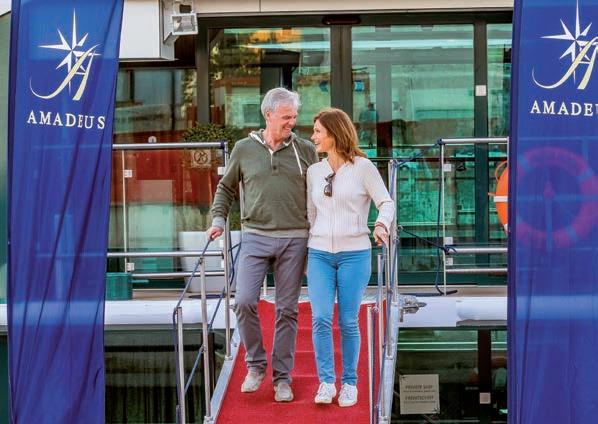
The club membership level is determined by the number of cruises taken with us.
AMADEUS CRUISER CLUB
Club membership costs nothing apart from a few minutes of your time while you fill out the attached postcard or apply online www.lueftnercruises.com/club.
Your AMADEUS CLUB advantages at a glance
Levels
Invitation to the exclusive ACC-Cocktail Annual Bonus** Welcome Bonus*
AMADEUS CRUISER CLUB: after 1 st cruise
Cruise 2 € 30,– € 30,–
Cruise 3 € 30,–
AMADEUS CRUISER CLUB-STAR Status: after 3rd cruise
Cruise 4 € 50,– € 50,–
Cruise 5 € 50,–
Cruise 6 € 50,–
Cruise 7 € 50,–
AMADEUS CRUISER CLUB-GOLD Status: after 7th cruise
Cruise 8 € 100,– € 100,–
Cruise 9 and more € 100,–
Free cabin upgrade to the next category***
Invitation to the Captain’s Table during the Captain‘s Gala Dinner
Free spa treatment (1 hour)
Invitation to exclusive AMADEUS events
Enjoy the many benefits of the world ofAMADEUS
* Welcome Bonus: can only be used as credit on board; valid for 5 years from date of issue
** Annual bonus: can only be used as credit on board; is sent annually and valid for the respective cruise season
*** Subject to availability at commencement of journey
Registration and information about the AMADEUS CRUISER CLUB: club@amadeus-cruiserclub.com www.lueftner-cruises.com/club
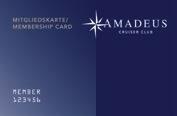

Ihre persönliche Mitgliedskarte
Your Personal Membership Card
Add something special to our next edition
Have you spent relaxing but exhilarating days on board an AMADEUS vessel, with lots of exciting discoveries and inspiring experiences?
If so, why not inform us about your last cruise and help us with our next AMADEUS MAGAZINE. Inform us which excursion you liked the best, tell us about somewhere special you discovered that you would would recommend or supply the best snapshot of your journey we are looking forward to receiving your contribution. Please mail us at magazin@lueftner-cruises.com
17
28
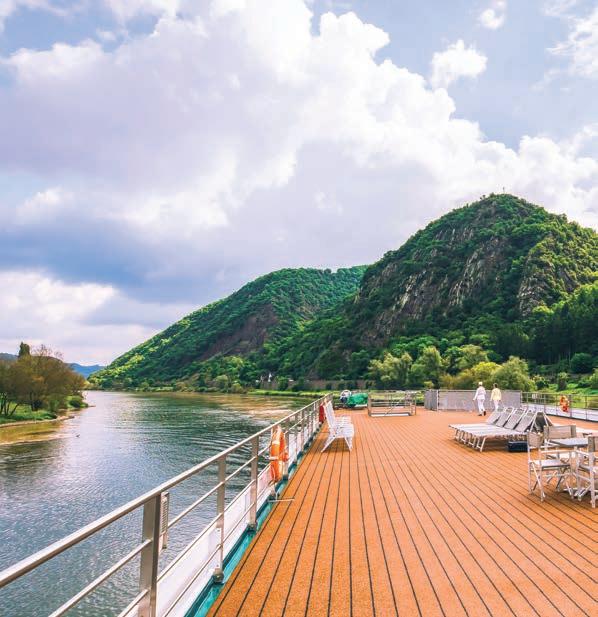





























 left: Wine growing along the Mosel above: Cochem’s landmark, the Reichsburg imperial castle
left: Wine growing along the Mosel above: Cochem’s landmark, the Reichsburg imperial castle














 JÖRG BERTRAM, travel journalist
JÖRG BERTRAM, travel journalist




















 Melk
DR. WOLFGANG LÜFTNER RECOMMENDS:
Dürnstein
Weltenburg
Schloegen Oxbow
Melk
DR. WOLFGANG LÜFTNER RECOMMENDS:
Dürnstein
Weltenburg
Schloegen Oxbow









 AMADEUS Suite and staterooms with drop-down panoramic windows
Panorama-Restaurant, AMADEUS Club, outdoor glass-shielded “River Terrace” on the bow as well as fitness room
AMADEUS Suite and staterooms with drop-down panoramic windows
Panorama-Restaurant, AMADEUS Club, outdoor glass-shielded “River Terrace” on the bow as well as fitness room



